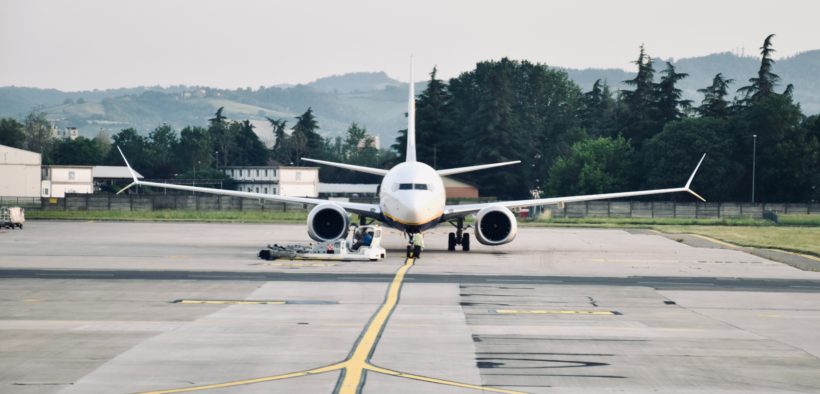Lower Costs, Higher Risk: The Boeing 737 Max and Self-Regulation
Share

Image Credits: @arnosenoner on Unsplash (Unsplash License)
In a well-known set of aviation disasters, two Boeing 737 Max aircraft crashed due to an issue with a flight control system called the Maneuvering Characteristics Augmentation System (MCAS). Consequently, the 737 Max was grounded for a few years to perform a comprehensive safety review. One of the factors blamed for the disasters was the process of certifying the MCAS system that caused them. Because these crashes demonstrate that the MCAS system plays a major role in the safety of the 737 Max, a reasonable observer might expect the government to take care to regulate its implementation properly. However, rather than the Federal Aviation Administration (FAA) itself certifying the MCAS system, it allowed Boeing to certify MCAS and many other items of the 737 Max. This instance was not the first time in the recent history of Boeing that an issue with a commercial airliner led to increased scrutiny of Boeing’s self-certification. A series of battery fires aboard 787 airliners also brought Boeing’s self-certification to greater attention in the years before the 737 Max crashes, making Boeing’s recent controversies with the 737 Max and 787 just the most recent examples of an ongoing trend. Previously, the agency delegated 95 percent of the certification work for the 747-400 in the late 1980s. In fact, the FAA had been working with the industry to manage the certification process since the 1940s, making the self-certification of the 787 and 737 Max the continuation of around 70 years of the FAA passing its responsibility to protect the safety of pilots and air travelers along to aircraft manufacturers themselves.
The difficulties faced by both the 737 and 787 lead to the question of why the FAA would ever choose to allow Boeing to certify its own aircraft instead of retaining its full influence over the aircraft industry. The FAA’s Oversight and Delegation of Authority Program—one of the ways through which Boeing was allowed to self-certify parts of the 737 Max—was intended to outsource the time-consuming task of certifying well-understood, low-risk, and non-critical components to enable the FAA more time and resources to focus on novel and high-risk systems. The benefit to the FAA of permitting self-certification was to allow the FAA to avoid maintaining a large staff to regulate complex operations such as Boeing. To give a sense of the scale of the reduction in staffing requirements for the FAA, roughly 42 FAA employees were tasked with overseeing 1,500 Boeing-designated Oversight and Delegation of Authority Program members at one point. In short, self-certification is far cheaper and easier for the FAA itself, which has to oversee the entire industry with limited resources. That ease of administration creates the argument for the FAA to allow self-certification. The downside is that the FAA gives up the control and authority of managing the certification process themselves.
While the airline industry offers a high-profile case study of the risks of self-certification, the practice is seen in other industries, often under the general umbrella of “self-regulation.” Other industries that have participated in self-regulation include offshore oil rigs and drug manufacturers, both of which pose major safety risks to workers or the public. While risks will always be present, arguments exist in favor of allowing industry to self-regulate which often center on skepticism in government or the belief that industry can effectively regulate itself. Arguments to support for self-regulation can come from disapproval of direct government regulation, as it comes with both direct and indirect costs. Direct costs are the costs immediately imposed upon companies to stay in compliance with regulation, while indirect costs include more abstract consequences such as increased research and development risks due to the increased difficulty of benefiting from potential breakthroughs under new regulation. Government regulation also takes time, especially when the government has to bring the weight of the justice system to bear against a company violating regulations. Those costs and the time required for government regulation (as well as the fiscal cost to the government itself) make up the downsides of government regulation, to which self-regulation is an alternative.
In contrast, the arguments against self-regulation are somewhat more intuitive. They can be clearly seen in the case against the certification of the 737 Max, in which many allege that Boeing failed to act upon safety concerns adequately. Those arguing against self-regulation often focus on conflicts of interest created by companies being responsible for policing their own behavior. That fundamental conflict of interest leads to the feared outcome of a self-regulated industry failing to create rules to police its own behavior properly. By definition, under self-regulation private sector organizations are left free to decide whether they have violated the rules laid out for them. Therefore, rules set under self-regulation are only meaningful as long as each individual actor makes a true effort to define and follow those rules properly. Those arguments make up the theoretical bases supporting and opposing allowing self-regulation. While it has the potential to decrease the impact of the costs associated with government regulation it also by definition places the power of making and enforcing the rules in the hands of those who have to abide by them.
Finally, to discuss the efficacy and consequences of self-regulation further, it is necessary to look beyond the specific case of Boeing and its airliners. An example from a different industry of voluntary self-regulation is food labeling. In this specific case, the food industry voluntarily created a label for healthier options, “Smart Choices,” but left the standard broad enough that unhealthy cereals could use the “Smart Choices” label, robbing it of its meaning. Self-regulation has also been discussed in relation to the tech industry, especially social media companies. In that case, a common view is that self-regulation has failed to reign in the harm done by social media companies. These cases show dangers of self-regulation that occur due to the same core issues of self-regulation encountered in the case of Boeing. Vague definitions and the inherent conflict of interest self-regulation creates mean that it is ineffective at motivating the private sector to take any undesired actions necessary for the public good. However, compelling undesired actions for the public good is the fundamental goal of regulation, which means failures of self-regulation to compel those actions shows a fundamental flaw in the efficacy of self-regulation.
While self-regulation will inevitably continue to have a place in our society, care needs to be taken around its use. Even the benefits accrued to the FAA from allowing Boeing to self-certify demonstrate the pitfalls. The decision to avoid hiring in-house FAA employees led to fewer impartial government employees to oversee the safety-focused employees who reported directly to Boeing. Additionally, allowing Boeing to self-certify less risky or better-known systems required defining what systems fall into those categories, which was blurred with the 737 Max certification process. Fundamentally, self-certification and self-regulation require trusting industries to police themselves, which is an inherently risky proposition. Even when the rewards are determined to be worthwhile (or other alternatives are unavailable), governmental vigilance against those risks is critical. Self-regulation is a broad enough umbrella that claiming it is never appropriate in any form is unreasonable. The government would have to step in to decide every single issue of product quality and safety, and often the private sector is in a better position to understand what is and is not best for both industry and consumers. However, the inherent conflict of interest of self-regulation and the difficulty of defining its bounds means that the risks of self-regulation need to be specifically understood and accounted for whenever it is put into practice.


Want to get involved?
Connect with us! Connect with us!